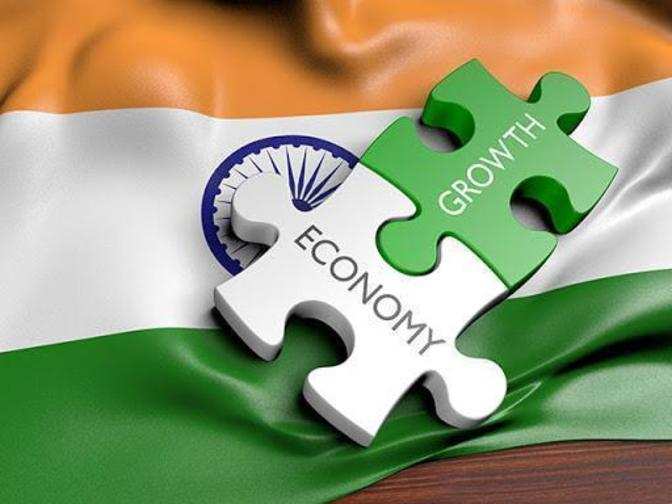Feature
Reasons why India can look forward to many positive changes in 2018

Mumbai : The seeds of many positive changes were sown in 2017 and could bring news to cheer Indians in 2018. Here’s a look at four positives.
Renewed fight against TB: The government, in March 2017, increased its focus on tuberculosis (TB) — a preventable, airborne infectious disease that killed 423,000 Indians in 2016 — with the release of the National Strategic Plan for Elimination of Tuberculosis.
The plan is to reduce the incidence of TB from 217 new cases per 100,000 in 2015 to fewer than 44 new cases by 2025. As part of this plan, funding for TB prevention and care doubled from $280 million in 2016 to $525 million in 2017.

The government also changed the TB treatment drug regimen — from multiple drugs at a time to a single daily dose in a fixed-dose combination. Daily doses are considered more effective than alternate day doses of several pills recommended earlier.
Further, the government started rolling out universal drug sensitivity testing for all TB patients to detect drug resistance to rifampicin, the main anti-TB drug. This will be aided by the increase in the number of cartridge-based Nucleic Acid Amplification Test machines which help detect drug-resistant TB.

India has a long way to go in eliminating TB, new cases of which reduced to 2.7 million in 2016, down 3.57 per cent from 2.8 million in 2015, according to data from the WHO.
To achieve its goal of TB elimination, India needs to reduce its incidence by 10 per cent every year. For this, the government needs to include the private sector which treats at least half of the TB cases in the country. It also needs to improve treatment completion and cure rates through counselling, offer social support to TB patients, and actively find patients in high-risk communities.

Declining infant/maternal mortality: In 2016, there were 90,000 fewer infants deaths than 2015 and the infant mortality rate too declined by eight per cent in the same period.
The gender disparity in infant deaths is also closing: In 2016, the infant mortality rate was 33 per 1,000 for boys and 36 per 1,000 for girls; in 2015, the figures were 35 and 39, respectively.
There were reductions in maternal mortality too. By 2013, India’s maternal mortality ratio was lower than the global average. From 254 deaths per 100,000 live births in 2004-06, the ratio fell to 167 in 2013. The global average in 2016 remained higher at 179.
The percentage of institutional deliveries in India rose — from 39 per cent in 2005-06 to 79 in 2015-16. But infant mortality and under-five mortality were higher than global average.

India prevented one million deaths among children under five years of age between 2005 and 2015. Interventions, including timely treatment of diarrhoea, vaccinations for tetanus and measles, and an increase in hospital births enabled this improvement, said experts.
India’s next challenge is to meet the 2030 Sustainable Development Goals on child and neonatal mortality. These goals were agreed upon under the United Nations Development Programme and involve the reduction of child mortality to 25 per 1,000 live births and neonatal mortality to 12 per 1,000 live births.

This would require an average annual decline of 4.1 per cent in child mortality and 5.3 per cent in neonatal mortality from 2015 onwards. India could achieve this by improving education, antenatal care and nutrition, and reducing maternal anaemia and tobacco use.
Scavenger deaths: In 2017, a year that saw about nine deaths every month because of manual scavenging, India finally decided to have an official count of how many people clean sewer lines in violation of laws banning such practices.
Some 102 workers were reported to have died while cleaning sewer lines manually, a task banned in 1993 by the Employment of Manual Scavengers and Construction of Dry Latrines (Prohibition) Act. The penalties on scavenging increased in 2013 through the Prohibition of Employment as Manual Scavengers and their Rehabilitation Act.

On March 21, 2017, the Safai Karmachari Andolan (Sanitation Workers’ Movement) wrote to the Home Ministry to direct the National Crime Records Bureau to count such deaths separately. The Andolan is a body that fights the practice of forcing Dalits, lowest on the Hindu caste hierarchy, to clean others’ excreta.
The National Safai Karmacharis Finance and Development Corporation — a not-for-profit under the Social Justice Ministry to help sanitation workers get out of manual scavenging — will survey 15 major states over six months to determine how many are still trapped in scavenging. This was decided by Social Justice Minister Thaawar Chand Gehlot in November.
As many as 180,000 people still clean latrines manually. Of this, 1,470 have died since 2010, claimed Safai Karmachari Andolan’s Bezwada Wilson, winner of the 2016 Ramon Magsaysay award.
States, however, claim there are about 13,000 manual scavengers, of whom 270 have died, according to data presented to Social Justice Minister Gehlot in November 14.
State governments have to pay Rs 10 lakh to families of workers who die while cleaning sewers. The government is set to mandate that contractors and private individuals also pay another Rs 10 lakh each to such families.
The Swachh Bharat Abhiyan, the Modi government’s sanitation scheme launched on October 2, 2014, had increased the workload of sanitation workers without any improvement in their lives, according to Milind Ranade, general secretary of Mumbai’s sanitation workers’ union.
Right to privacy: In a historic verdict, a nine-judge constitution bench of the Supreme Court ruled in August that the right to privacy is a fundamental right under the Indian Constitution.
“The right to privacy is protected as an intrinsic part of the right to life and personal liberty under Article 21 and as a part of the freedoms guaranteed by Part III of the Constitution,” wrote Justice J.S. Khehar, then Chief Justice of India.
This ruling holds significance for the future of Aadhaar, the government’s 12-digit biometric identification programme that intends to link with all schemes and services citizens avail of.
The SC has yet to rule on a clutch of petitions challenging the Aadhaar bill. In the meantime, the government continues to mandatorily link bank accounts, mobile services and welfare schemes to Aadhaar.
In a recent hearing on the matter, the SC extended the deadline for Aadhaar linking by three months to March 31, 2018.
Chief Justice Dipak Misra observed that the court’s earlier orders were passed based on the government’s executive decisions, and now needed to be tested against the Aadhaar Act notified on March 26, 2016. The apex court will begin hearing final arguments on the programme’s legality on January 17.
Various sections of civil society have opposed the Aadhaar programme over privacy and security concerns. Personal information obtained under the programme could be misused and deprived sections of the Indian population without access to Aadhaar enrolment may be further marginalised, they have pointed out.
Apart from the Aadhaar programme, the right to privacy judgement is also likely to affect future judgements on cases related to freedom of sexual orientation, right to eat what one wants to, right to medically terminate a pregnancy, freedom to criticise the government and right to control dissemination of personal information in the physical and virtual world, among others.
Entertainment
Meghalaya Reserves Legalized Gambling and Sports Betting for Tourists

The State Scores Extra High on Gaming-Friendly Industry Index
Meghalaya scored 92.85 out of 100 possible points in a Gaming Industry Index and proved to be India’s most gaming-friendly state following its recent profound legislation changes over the field allowing land-based and online gaming, including games of chance, under a licensing regime.
The index by the UK India Business Council (UKIBC) uses a scale of 0 to 100 to measure the level of legalisation on gambling and betting achieved by a state based on the scores over a set of seven different games – lottery, horse racing, betting on sports, poker, rummy, casino and fantasy sports
Starting from February last year, Meghalaya became the third state in India’s northeast to legalise gambling and betting after Sikkim and Nagaland. After consultations with the UKIBC, the state proceeded with the adoption of the Meghalaya Regulation of Gaming Act, 2021 and the nullification of the Meghalaya Prevention of Gambling Act, 1970. Subsequently in December, the Meghalaya Regulation of Gaming Rules, 2021 were notified and came into force.
All for the Tourists
The move to legalise and license various forms of offline and online betting and gambling in Meghalaya is aimed at boosting tourism and creating jobs, and altogether raising taxation revenues for the northeastern state. At the same time, the opportunities to bet and gamble legally will be reserved only for tourists and visitors.
“We came out with a Gaming Act and subsequently framed the Regulation of Gaming Rules, 2021. The government will accordingly issue licenses to operate games of skill and chance, both online and offline,” said James P. K. Sangma, Meghalaya State Law and Taxation Minister speaking in the capital city of Shillong. “But the legalized gambling and gaming will only be for tourists and not residents of Meghalaya,” he continued.
To be allowed to play, tourists and people visiting the state for work or business purposes will have to prove their non-resident status by presenting appropriate documents, in a process similar to a bank KYC (Know Your Customer) procedure.
Meghalaya Reaches Out to a Vast Market
With 140 millions of people in India estimated to bet regularly on sports, and a total of 370 million desi bettors around prominent sporting events, as per data from one of the latest reports by Esse N Videri, Meghalaya is set to reach out and take a piece of a vast market.
Estimates on the financial value of India’s sports betting market, combined across all types of offline channels and online sports and cricket predictions and betting platforms, speak about amounts between $130 and $150 billion (roughly between ₹9.7 and ₹11.5 lakh crore).
Andhra Pradesh, Telangana and Delhi are shown to deliver the highest number of bettors and Meghalaya can count on substantial tourists flow from their betting circles. The sports betting communities of Karnataka, Maharashtra, Uttar Pradesh and Haryana are also not to be underestimated.
Among the sports, cricket is most popular, registering 68 percent of the total bet count analyzed by Esse N Videri. Football takes second position with 11 percent of the bets, followed by betting on FIFA at 7 percent and on eCricket at 5 percent. The last position in the Top 5 of popular sports for betting in India is taken by tennis with 3 percent of the bet count.
Local Citizens will Still have Their Teer Betting
Meghalaya residents will still be permitted to participate in teer betting over arrow-shooting results. Teer is a traditional method of gambling, somewhat similar to a lottery draw, and held under the rules of the Meghalaya Regulation of the Game of Arrow Shooting and the Sale of Teer Tickets Act, 2018.
Teer includes bettors wagering on the number of arrows that reach the target which is placed about 50 meters away from a team of 20 archers positioned in a semicircle.
The archers shoot volleys of arrows at the target for ten minutes, and players place their bets choosing a number between 0 and 99 trying to guess the last two digits of the number of arrows that successfully pierce the target.
If, for example, the number of hits is 256, anyone who has bet on 56 wins an amount eight times bigger than their wager.














